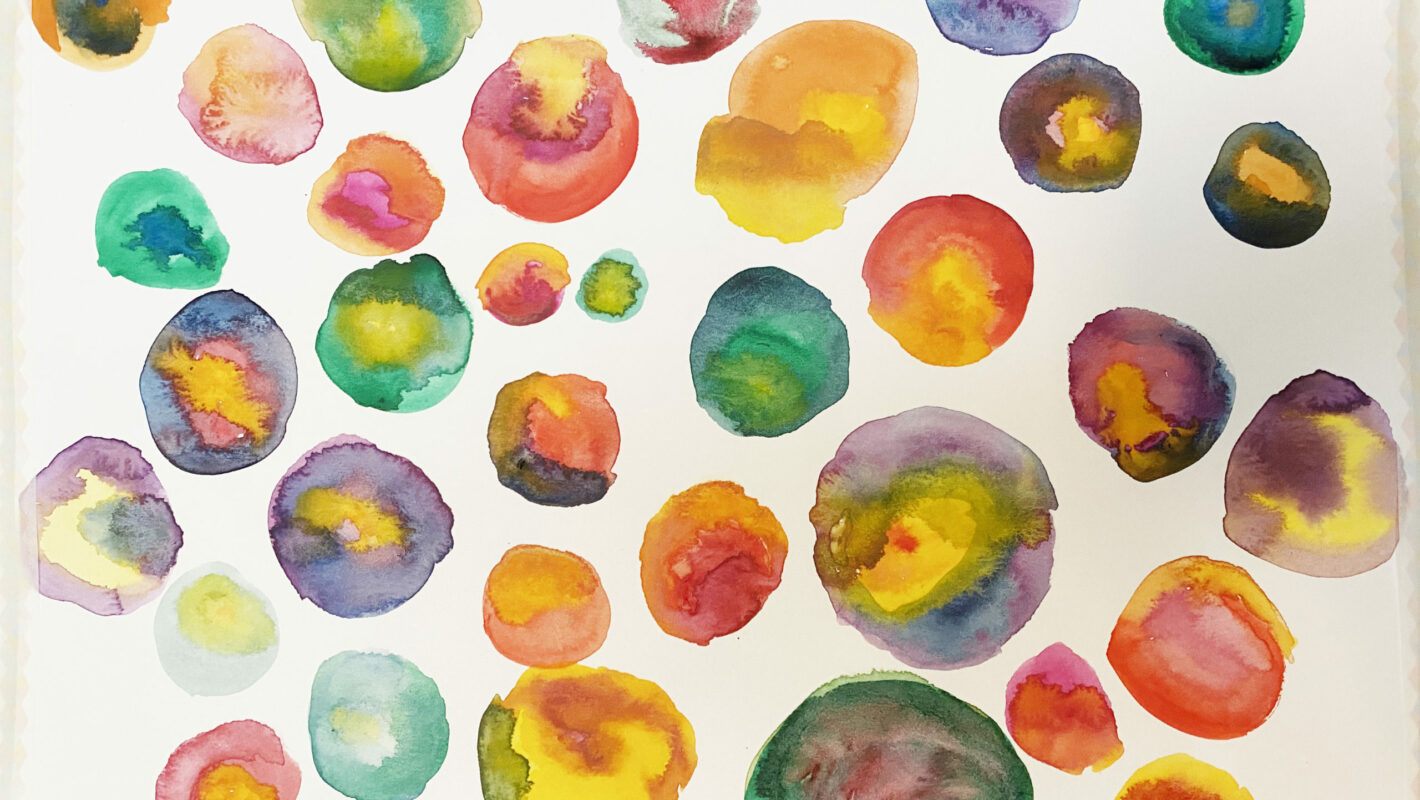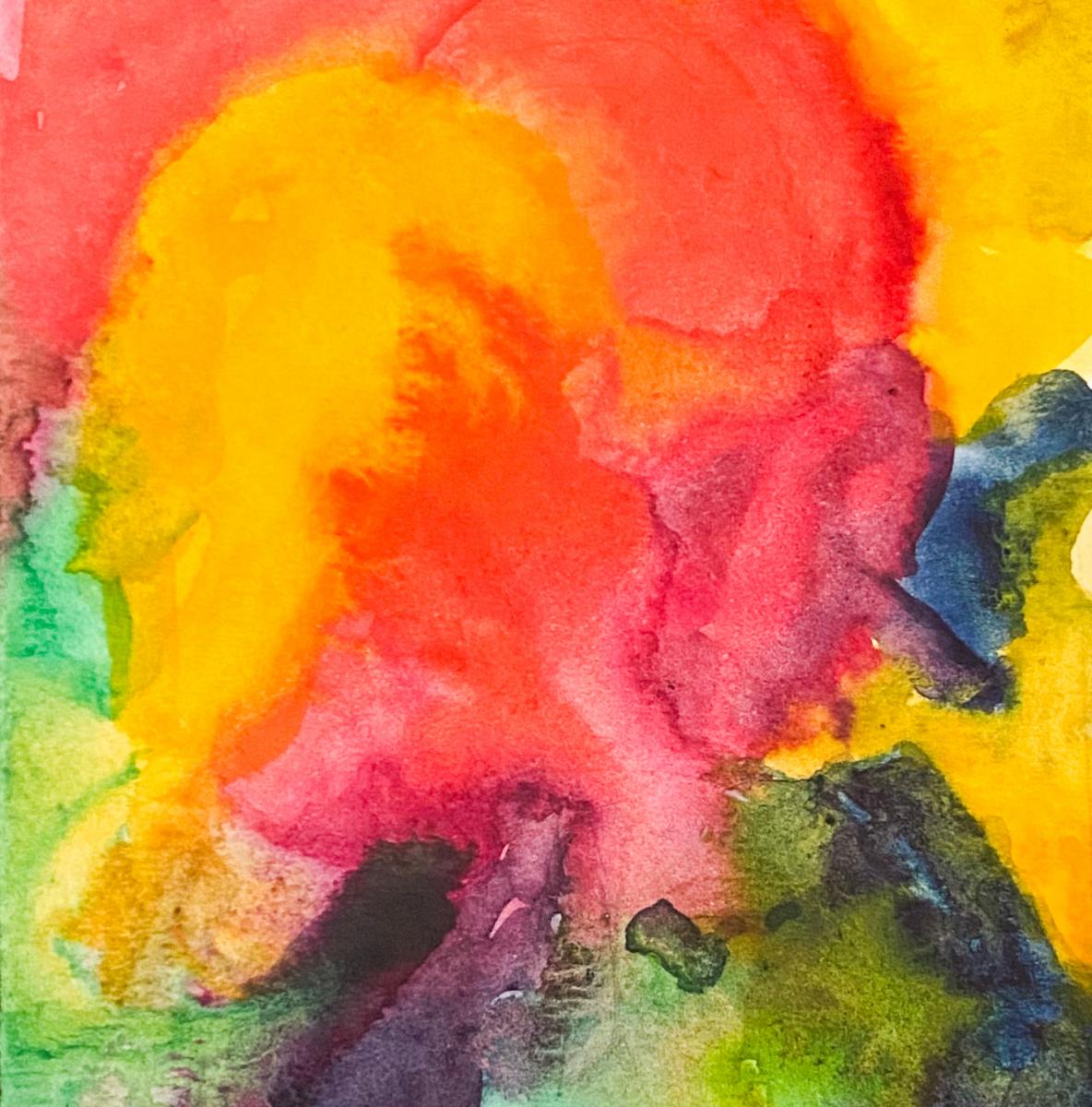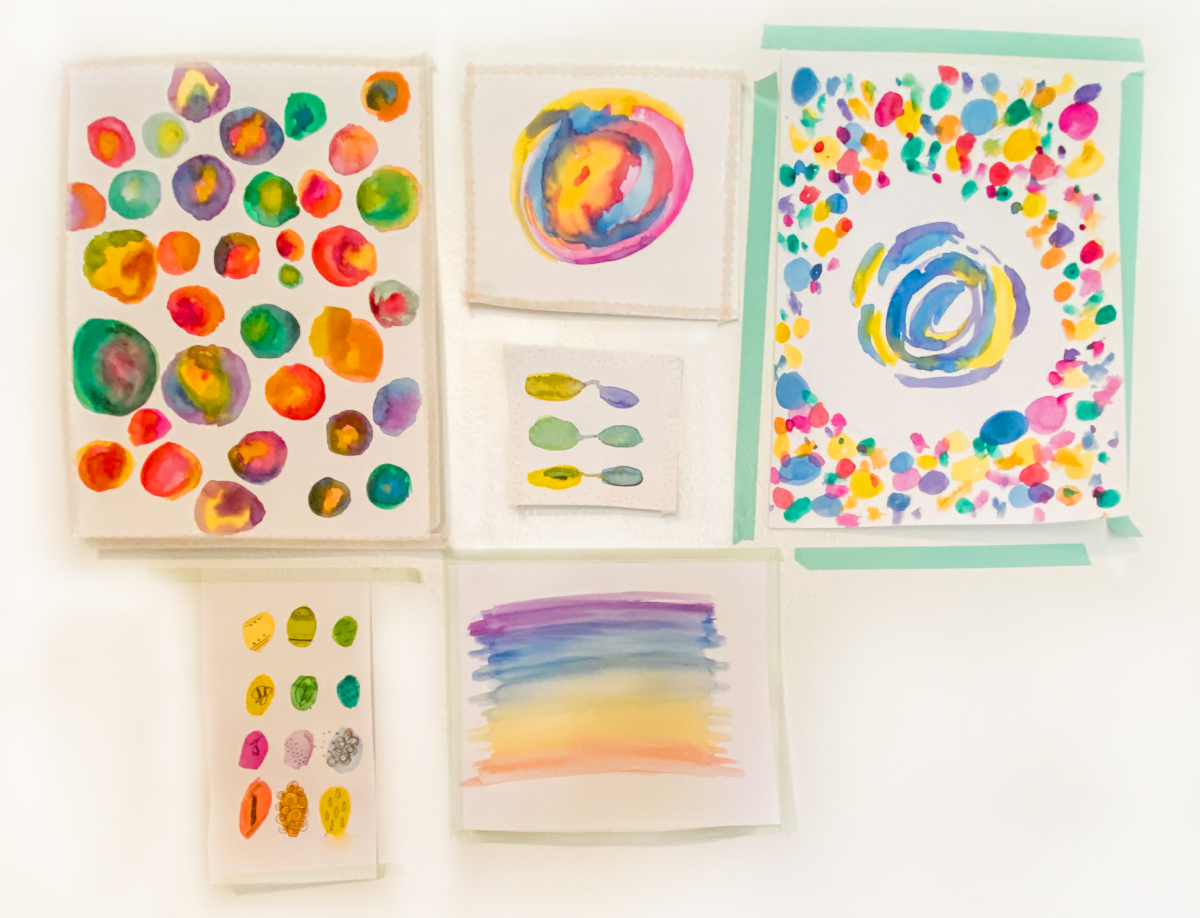Abstract Art for Kids: A Fun At-Home Activity

“Art does not reproduce what we see. It makes us see…” -Paul Klee
Wavy lines, colors blending or splashing together, oversized monochromatic canvases, and paintings so thick that the texture becomes the focus! These are some common characteristics we see in abstract art. Abstract art invites the viewer to interpret, rather than recognize, a subject. It is an amazing form that lets people explore, learn, and grow in creating art.
In many ways, kids naturally begin their art journeys with an abstract art approach. Because fine motor skills may not be developed, they interpret what they see, feel, and experience using their fingers, or while practicing holding brushes or other tools.
Art is more than a pretty picture!
Introducing children to art at an early age promotes building many developmental skills. Learning to hold a brush helps with fine motor movements, and supports muscle memory when they begin to write. Painting and drawing are also one of the first steps in letter recognition, which means they’re already beginning to develop the fundamental skills of how to read and write!
Through conversation with children about what might be going on in their art pieces, communication and cognitive skills are developed. In abstract art, it can be especially helpful to ask what the artist was feeling when they made specific choices. Conversations also support vocabulary building, emotion identification, and social-emotional health.
 Sometimes, it’s hard to get started:
Sometimes, it’s hard to get started:
We all can struggle with where to begin sometimes. We might have a fear of starting when we don’t know the outcome of the project, or maybe we’re reluctant to begin because we don’t know if we’ll be “good” at it. The beauty of abstract art is that these (completely valid) feelings don’t need to stop anyone from getting started!
Usually, there is not an end goal in mind when making abstract paintings. Since there isn’t an end picture you’re trying to create, you can keep painting until you’re satisfied. The options of abstract art are open-ended that there is no need to worry about mistakes. They might even become a highlight of the work!
Ideas to play with abstract art!
-
A low-cost way to abstract paint in all ages is to finger paint! This can be done on paper, in a tabletop tray, with real paint, or with colored shaving cream. This activity can be abstract, but also a cool sensory play opportunity.
-
Use the watercolor technique wet-on-wet when painting and watch your colors blend.
-
Explore using shapes and colors to express feelings or objects. Abstract art is subjective. Think about how shapes might represent objects within a scene or how colors can set a mood. A great book to read about colors and mood is “My Many Colored Days” by Dr. Suess.
-
At the end of your abstract art-making process, help engage everyone’s confidence by creating a simple at-home art gallery. Create temporary frames with paper tape on your walls.
Example questions to help facilitate a conversation about an abstract piece of work:
-
How does that color make you feel?
-
Why did you choose to use that color/shape/texture?
-
What does color/shape/texture say in this piece?
-
Tell me more about this… (point to a section of the painting).
Abstract art is full of learning opportunities. It’s also a great way to navigate the difficulties we can all face of getting started and expressing ourselves.
Additional Resources if you want to learn more:
Creative Art Helps Children Develop Across Many Domains
The Art of Creating: Why Art Is So Important for Early Childhood Development
